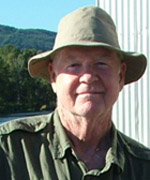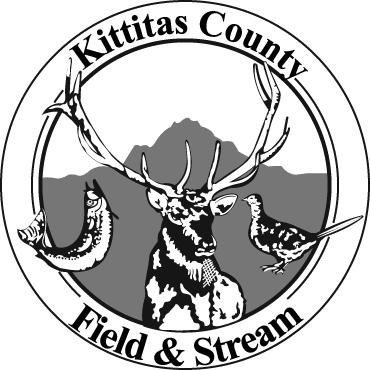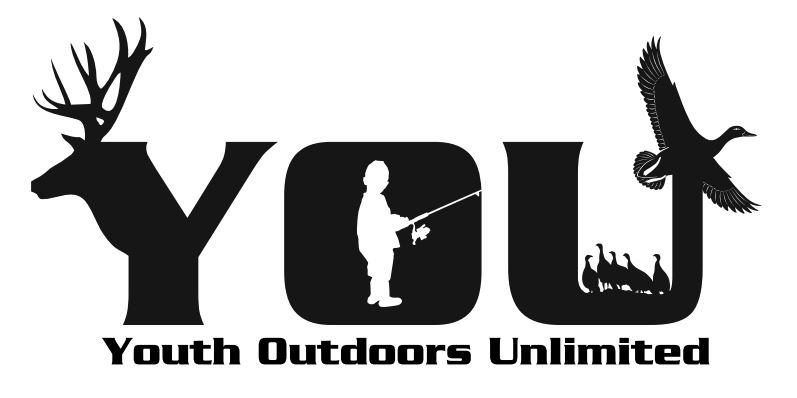Archive for March, 2020
About Our Bees
It was another off-Reecer Creek meetings of the Reecer Creek Rod, Gun, Working Dog & Outdoor Think Tank Benevolent Association. After the three of us performed our new traditional elbow bump greetings all around, we moved to our primary agenda topic. We are officially into spring and heading for blooming time for everything from flower beds to fruit trees, thus, the topic was bees – and how much trouble these major pollinators are really having.
Bees are important. It turns out that a third of what we eat actually depends on bee pollination, and that includes most fruits and vegetables, nuts, herbs, spices, oil crops – and coffee. Then, too, crops grown to feed animals, plant-based medicines (like aspirin or morphine), and cotton and other fibers are also bee-pollinated. A good many of our trees also depend on bees.
Before we continue to the question of bees and trouble, here’s a brief primer. Bees occupy the Kingdom Animalia, the Phylum Arthropoda, the Order Hymenoptera, and the Class Insecta. They begin life as eggs, hatching into larvae to feed and pupate, eventually emerging in their adult form. As members of the insect class, bees have three parts to their bodies: a head (with two antennae), a thorax (with six legs), and an abdomen. Bees have two pairs of wings and all have “branched” hairs somewhere on their bodies. Only the females of a few species have stingers (modified ovipositors, which were originally used to lay eggs). We associate most bees with colors of black and yellow, but a large number of bee species employ other color schemes, with greens, blues, reds, and blacks. Some have stripes and a shiny metallic appearance. They range from an inch in length (carpenter bees and bumble bees), to less than a tenth of an inch (the Perdita minima).
There are some 4,000 North American native bee species. Our honey bee, originally a Eurasian bee and domesticated across the globe, is only one of more than 20,000 worldwide bee species. They occupy virtually every ecosystem and forage exclusively on nectar (sugar) and the protein in pollen from flowering plants. In that foraging, bees carry out pollination. As it enters a flower to feed on nectar and gather pollen, some of the pollen sticks to the bee’s body, to be deposited on the next flower visited. This fertilization allows the plant to reproduce and generate the fruits and seeds relied on by so many other animals and humans as a food source. Bees actually pollinate about 80 percent of all flowering plants (some three-quarters of the fruits, nuts, and vegetables grown in the United States).
The “Save the Honey Bees!” chant we’ve been hearing off and on over the past decade and more is a bit misdirected. Honey bees are a domesticated and globally distributed creature. While various diseases or pesticides have wiped out large communities locally, and overall numbers are declining somewhat, for a variety of reasons, this bee is in no danger of extinction. Other, equally (or more) important pollinators are in need of more help, however.
Honey bees probably get more credit than they earn – in the pollination world over all, they are sort of slackers. In several studies and observations over the past few decades – for dozens of crop systems across the world, it seems that the vast majority of pollination was carried out by native bees and other insects which evolved along with the crops themselves. Even common fruits like tomatoes require bigger bees than honey bees, relying on large bumble bees. Given that most of those bees are not communal – and thus not creating hives of honey for our culinary delight – they get too little attention.
Modern farming and landscaping methods have made much of North America’s landscape inhabitable for native wild bees, so the domesticated honeybees have been asked to pick up the slack. This is not an easy challenge. In one example, the near-doubling of acreage for almond trees (that vast increase in sales of almond milk) in California has stretched bees to the limit, even though bee hives arrive from across the US to help out with the pollination. To help maintain bee health and populations – of both honey bees and native wild bees – large areas in and around the almond orchards are now being planted to appropriate wildflowers.
Year to year, as agricultural demand grows bees may or may not be in sufficient numbers for needed pollination. Many initiatives across the country are aimed at restoring domestic and wild bee populations through habitat and native plant restoration.
Then, too, as bees become more and more in demand, organized crime steps in. With growing sophistication, thieves are targeting been hive operation across the country. Indeed, “stealing and reorganizing” operations in California have been described as “chop shops for bees!” Several law enforcement organizations through Central California and other agricultural regions now have officers trained to specialize in “hive crime.”
We appear to have enough pollinators here – or coming – in Central Washington for the season ahead. Still, bees of nearly all species, along with other pollinators, are critical to our food supply and our very existence. The issues are many and complex. Not enough is being done across America, but initiatives are getting bigger and more effective each year. Google any aspect of bee health, threats or future to know more.
Comments Off on About Our Bees
Doc’s Gone Hunting
Don “Doc” Childress left this planet on January 19. If you knew Doc, you may or may not learn something new about him in the time it takes you to read this. If you didn’t know him, you missed one of the best men who ever shared life with those of us in Paradise. If it is true that a person is only as big as the number of things to which he or she attends with interest, Doc was a very big man.
He was part of so many lives and activities, over so many years, that when I decades ago asked a friend if he knew this chiropractor – this Doc Childress guy – he just looked at me. “Really?” He said, “Everybody knows Doc!” It wasn’t long before I began to see his point. Doc was in plays and musicals from Yakima to Leavenworth, he was active in his church, he focused a lot of his life around Labor Day Weekend with the Fair Board and the Rodeo Posse. If the Noon Kiwanis was doing any activity he’d be leading or helping up to his elbows. He seemed to have a warm greeting for most anyone, and when he laughed you pretty much had to join in – even if you had no idea what was so funny.
My earlier-departed friend Jim Groseclose once observed that you could take the measure of a man by listening to how he talked about his wife and family. Over the years, we spoke often of our families. He showed me that no matter the joy, quiet, or sheer weirdness of my own family life, there was always love and respect to be spoken and celebrated.
More than anything, I suppose, I came to know the man who loved the outdoors and hunting. He loved anything and everything outdoors – and was up for pretty much anything he could do to make sure everyone else had outdoor opportunities of their own. He and wife Geraldine worked diligently to ensure that their family had outdoor roots. Listen to his laughter-filled tales, and you would quickly realize that his hunting with son Dana and huckleberry chasing with daughter Anneliese were the stuff of high family legend. He once noted that a life not largely lived outdoors was not a life. This is probably why he was so determined that the Kittitas County Field and Stream Club (and its mission to make certain that future generations would always have an outdoors to share) would stay alive and relevant.
On any number of occasions during the fifth to eighth decades of the Club’s existence, after its 1919 founding, Doc stepped up to serve as club president or fill any other role which might help keep it growing and moving. He seemed to know most everybody in the Kittitas Valley, and was never afraid to light a fire under anyone on behalf of our outdoor future. He was a driving force behind the first Chukar Run Banquet, the primary source of funding for club work with kids and public lands. With his joy, laughter and ability to talk to anyone, he was Master of Ceremonies for those banquets into the start of this 21st Century.
Wilma Dlouhy became the first woman officer – and the first female member – of the Club in 1989. A couple years before that, she will tell you, she accompanied husband Bob to a club meeting. (Indeed, she may have been the first woman to ever attend such a meeting.) Only one man in that room of 40 or more club members even acknowledged her presence; Don Childress walked over and warmly welcomed her. It was Doc who soon fought for her membership and her election to office. From that time forward, women have been critical to the continuing success of the oldest “sportsman’s” club in the state of Washington. Maybe that’s all we need to know about Doc’s vision and courage.
Certainly, he had a more personal and private side, too. Doc grew up hunting deer up in the hills of his youth in the northeast corner of our state. After he settled in Ellensburg, he and fellow chiropractor Maynard Linder became best friends and formed the “chiropractic royalty” of this part of Washington. They were also diehard hunting partners, enjoying many years afield. When Myron Linder (the next generation of that chiropractic royal family) was a youngster, he would get to go with the two docs, and maybe even hunt along. He will tell you that Doc’s enthusiasm for life and the hunt was ever present as they alertly poked through woods and thickets after those whitetails. Over time, Doc’s son Dana grew into that sacred family experience.
In recent years, with our youngsters grown, busy taking care of their own, and less available to come play, Doc and I talked about partnering up for a journey to chase deer in his beloved hills. Our schedules, and then his faltering health, never let that happen – one of only a handful of regrets I carry. Still, we wasted several fine moments sharing our hunting stories. I asked him once where deer hunting fit in his life. He laughed through recollections of friends and activities, soberly praised God for his amazing family, then smiled and said, “Hunting was in all of that, wasn’t it? …I sure would like to get out there again!”
In January, Doc passed on to his reward surrounded by family – those he often said gave him the strength to carry on in this life. Shortly after his passing, Dana picked up his phone and called his life-long friend Myron Linder.
He started the conversation with “Dad’s gone hunting.”
Comments Off on Doc’s Gone Hunting
Kids and Outdoor Schooling
You probably recall how much I appreciate the Washington Outdoor School (formerly the Roslyn Outdoor School), and the work KEEN (Kittitas Environmental Education Network) has done to bring real outdoor education to kids in the Lower Valley at Helen McCabe Park.
This idea of outdoor early education has been catching on nationwide. Washington stepped up, launching a pilot program in 2017 to work on the official requirements for licensing of outdoor preschools. Even up to last year, no outdoor preschools in the United States were licensed, which meant they couldn’t offer full-day programs, something quite important for working families. In addition, unlicensed outdoor preschools could not offer state financial assistance to families. Over the past two years, however, the Washington Department of Children, Youth and Families has worked on creating new guidelines specifically for outdoor learning. The regulations are slightly different than those for indoor schools. For example, one of the new standards requires each classroom to have a teacher for every six kids, so most classes will have two or three staff present. There are also guidelines for implementing naptimes, or when it rains, and so forth.
With the new regulations in hand, Washington finally started to officially license a few programs, becoming the first in the country to do so. Last September, two programs on the west side made it through the process: Squaxin Island Child Development Center in Shelton, Mason County, and Kaleidoscope Preschool and Child Care Center in Eastsound, San Juan County. The folks guiding the program for the state have been very supportive of the benefits of being outdoors and are recognizing that, for some families, outdoor schools are nearly perfect options.
With outdoor schools, cost of education is also an important factor. Since outdoor schools spend far less than traditional schools on facilities and maintenance, more funding can go toward high quality teachers and financial support for families needing it. One example often cited is the experience of Seattle’s Tiny Trees Outdoor School. Tiny Trees built six outdoor classrooms/sites at a cost of $320,000, compared to the cost of one typical indoor preschool classroom of about $350,000. In these ongoing times of teachers and schools scratching for funding, such savings are significant.
Then, too, you don’t have to look far or hard to find research about the highly positive health, life and general well-being impacts of outdoor time and activities for kids (adults, too, for that matter). In Europe, the Danes and Swedes started outdoor kindergartens in the 1950, with Germany not far behind. There are many hundreds of “forest kindergartens” across the Continent – all devoted to building the future health of their citizens, societies, and countries.
The education and health side of this is particularly interesting to me – especially when it comes to vision. Some decades ago, an ophthalmologist buddy suggested that growing nearsightedness among kids was the result of them being pushed to read too soon. “If you want kids to have healthy and strong eyes,” he said, “get them out in natural light looking at distant things – then really limit the time they are focusing up close until they are eight or nine… Get your kids outside…” Outdoor schools seem like an obvious answer.
And what about today’s outdoor preschools across Washington? To have a sense of just how many such schools (with many also offering certain days of K-5 outdoor classes) there are, just Google “Outdoor and Nature-based Preschools in Washington.” For a broader look at the growing community of Washington outdoor educators, check out the Washington Nature Preschool Association at www.wanpa.org.
Our local Washington Outdoor School is helping many youngsters get a good start on their educations. The school now offers outdoor education in Roslyn, Ellensburg, and Yakima, with a great selection of summer camp offerings. It continues to grow with community support and outdoor-savvy teachers, offering both preschool and K-5 classes. Every day, Director Sibyl Maer-Fillo and her staff live their mission to “cultivate a child’s sense of wonder and foster a sense of stewardship through immersion in the natural world. We believe that interacting with nature encourages a sense of place, awakens curiosity and creates healthy minds and bodies.”
Take a look at some happy youngsters and find out more – or register your kids for the program that is perfect for them – at www.waoutdoorschool.org/. Take a look, too, at the Facebook page (www.facebook.com/WAOutdoorSchool/). To contribute to the important work of the school or to find answers to any questions, email [email protected] or call 206-898-2041.
Given that outdoor schools are so good for youngsters and our future – and save a significant amount of money over traditional classrooms – I keep wondering when, and at what level, our local school districts will become more actively involved.
This is critically important business. To paraphrase Jodi Larsen, Upper County Rotary: Children are the emissaries we send into a time we will never see – what do we want them to take along?
About Names, Words, and “Owning” Public Lands
I have long been fascinated with words and names, and the deeper meanings of them. It all started, I am certain, when I was six years old asking my mother about my middle name. We spent some time looking it up, and it turned out that “LeRoy” is the Anglican version of the French “Le Roi” (the king). I can’t say that life turned out quite as my six-year-old self joyfully imagined it, but I have certainly been aware through these decades – for better or worse – of a heightened responsibility for my actions.
When I was teaching the Asian portions of my world geography classes, part of the cultural discussion had to do with family histories. In some cases, Asian students were able to trace family names back 50 generations and more. Furthermore, virtually every East Asia student could readily speak to their name, what it meant, and why it was given. A young woman might have a name which translated into “beautiful flower to bring joy and peace to the family,” and a young man’s name might be focused on hard work, or wisdom, or success in bringing peace and prosperity. The American students would generally deny any meaning for their names – until they finished the “find the etymology of your name” assignment I gave them. Almost to a person, they were surprised to find how closely their lives were aligned with the history and definition of the “random” names with which their parents had saddled them. Names matter.
Words matter, too. Find the roots of various common words and it may change the way you look at the world around you. For example, have you considered that the root words of “patience” (and its various forms), from Middle English, French and Latin, are “quiet suffering.”
How we use words informs how we behave and reinforces what we believe. Communities all around us, from those living in poverty to minorities and genders, have been telling us this forever. Words matter; sometimes in surprising ways.
What brought all this on was a last-week conversation about names and the importance of helping friends and coworkers remember, and properly spell and pronounce, one’s name. That led into a confab about the various meanings of words we commonly use to guide our lives.
On the way home, I heard a talk show caller speak of land that was “owned” by a state agency, and other land that was “owned” by the feds. At home, I read the interesting article about the volunteers working to find solutions to problems with the much-used and somewhat abused Manastash Trail system to The Ridge. In that article, one of my favorite homeys spoke of the efforts to help find solutions to the problem on land “owned” by the Washington Department of Fish and Wildlife. Hmmmm…
The concepts surrounding the public ground of Paradise, and elsewhere, have always intrigued me. I have long believed that the idea of public ground – “our” land – is fundamental to the good life we seek here in America, and I’m never surprised when some homey stops me to chat it up. You may even be one of those who has been indignant about how your voice and opinions on the management of roads and access on “our” ground didn’t seem to matter.
This is a particularly important point for our county. As you know, Kittitas County has more public land than any county in Washington, and it is those lands over which users and managers get sideways from time to time.
Issues over management of public lands start with the way those lands are described. Those agencies and managers who speak of “managing the public’s lands” (of which there seem to be more these days) seem to be consistently respected by users. On the other hand, those agencies and managers who speak of “managing the land we own” are nearly always at odds with users. It all lies in perception of ownership.
Too often, I still hear city, county and state officials refer to our public land as “owned” by one or another public agency or group. I have even heard politicos who would fight to the death for private property rights use that language, unconsciously giving ownership rights to agencies simply charged with “managing” our land.
If one owns land, one has far less obligation to the opinions or wishes of others than if one is simply managing it. There is a big perceptual difference and it shows up in how ground is handled. Thus, I have long been on a mission to help folks remember that we all are owners of the public land around us – and the folks who manage it for us are hired to do so.
Words, and how we use them, are important to the future of our outdoor heritage. If it is not “our” ground, why would we care about our grandchildren’s grandchildren, and those who will follow?
We have a sacred responsibility to look after our ground. Words, and how we use them, matter.
Comments Off on About Names, Words, and “Owning” Public Lands







